Wellington Boot That is Easy to Slip on
Walking in the UK often involves rain. And mud. And lots of both.
If you are looking for the perfect footwear for relatively flat walks in these sort of conditions, then we recommend you check out the latest wellington boots which incorporate excellent soles with grip and flexibility .
These are often the same Vibram soles which are used on high-end walking boots, and are perfect for dog walking in the often trench-like conditions of our lanes and moorland.
When wearing wellies for walking, your feet will be thoroughly protected from sludge. Made from high-quality rubber, the best wellies will effectively keep water out while remaining rugged enough to withstand rough conditions.
Wellies are not breathable
You can walk through streams and rivers without risk of wet socks, but bear in mind that wellingtons are not breathable, so condensation can sometimes build up inside.
Wellies are also not 100% ideal for significant climbs or high altitude hikes because you tend to get flex in the main body (or 'shaft') of the boot. This can lead to chafing and rubbing of the boot against your legs, and also risk of twisting an ankle in extreme slippery conditions.
Also, because there are no laces to tighten the boot up against your foot, you need to be sure to get a snug fit. Often this comes down to the styling of the boot, and our recommendations below are excellent in this department.
For activities like country lane rambles, wellingtons are ideal and effectively combine the best of both worlds allowing you to splash through puddles to your hearts content.
Unleash that inner child!
To help you find the perfect wellington boots for walking, we've conducted a thorough analysis of the top performers on the UK market today. Check out our recommended choices below.
Buying Guide
When looking for the best boots, there are several features you want to observe. Doing so helps to ensure that you find the perfect pair for your needs. In addition, when choosing the wellington boots, you want to think of how you will use them.
After all, wellington boots come in a wide selection of designs. You can wear them for farm work, gardening, or even in your everyday activities. In the buying guide below, we've shared the key features to look out for.
• Outer Material
The outer material of your wellington boots plays a vital role in determining the harshness they can withstand. Typically, the best wellington boots come in a choice of two outer materials, i.e., polyurethane and rubber. Although rubber boots tend to cost more, they also offer more flexibility.
Rubber boots feature a flexible and durable design and can easily mold to the shape of your feet over time for a perfect fit. On the other hand, polyurethane boots tend to cost cheaper as the material is readily available. However, polyurethane is also stiff and less rugged, especially in rough conditions.
• Lining
Underneath the outer material, your boots need to have an interior lining. For wellington boots, you will find three main types of lining materials. These include leather, neoprene, and jersey linings.
Leather-lined wellies are the most expensive of the bunch. While the leather lining is tougher and more durable, it still offers a luxuriously comfortable feel and makes it easy to put on and remove the boots. Furthermore, leather-lined wellies offer more warmth during the cold season and remain breathable and dry even when in contact with water.
Neoprene-lined wellies are the most common and similar to the leather material. They offer more durability too. Typically used in diving suits, neoprene material is favored for its superior insulative properties. The thicker the lining, the more insulative it is.
Typically, you will find boots with either 3mm or 5mm linings. A 3 mm neoprene lining offers insulation in temperatures of up to -15 degrees Celsius. Similarly, the 5mm neoprene lining extends to about -25 degrees Celsius.
Furthermore, neoprene-lined wellington boots enhance the fit of your boots as it helps them mold to the shape of your feet. On the other hand, a jersey lining is made from cotton, polyester, or a mixture of both.
These types of linings tend to be cheaper and are not as insulative as neoprene or leather. Nonetheless, they are still functional. Polyester material, for example, is impressively lightweight and moisture-wicking. Cotton material, on the other hand, is quick-drying. Additionally, cotton doesn't create suction inside the boots, making them easy to put on and remove.
• Outsole
The outsoles of your wellington boots also have to be durable and rugged enough. Typically, you want to go for wellies made using rubber outsoles. This is because rubber offers the much-needed flexibility, traction, and grip to the ground. Some manufacturers even opt to use patented Vibram soles.
• Size & Fit
When choosing your wellington boots, you must consider their size and fit. To get the perfect pair of boots, you want to measure your calves at their widest point and length of the feet with a tape measure. You can then use these measurements to compare the boot sizing, thus ensuring that you get the right fit.
Besides, to get the perfect fit, you have to make sure your wellington boots fit snuggly. The boots should be snug around the feet, legs, and calves to provide comfort and freedom of movement. After all, you don't want your boots to fit tightly as they may easily cause blisters and chafing on your feet.
Loose boots, on the other hand, can limit movement and slow you down. When choosing the right boot size and fit, you also want to consider other factors, such as fitting thick socks inside the boots. To complement the fit of your boots, you can also look into some additional features. These include adjustable side gussets and straps, which allow you to adjust the size and fit of the boots.
• Boot Height
Wellington boots come in four heights for the most part. These include full heights, knee highs, half-height, and ankle height boots. Full height boots are ideal for the cold season as they extend to the top of your calves. In fact, full-height boots are amongst the most popular wellies.
Due to their extended height, they are also recommended for use in the countryside and farms. This is because the coverage they offer helps protect you against elements such as tree branches on the way as well as mud and puddles. Half-height wellies, on the other hand, reach to the bottom of the calf.
These boot options are almost similar to full-height boots. They're typically recommended for people with wider calves because they rest underneath instead of above them. Nonetheless, they still offer adequate protection against mud and other harsh elements.
Knee-high wellies almost resemble full heights, as they extend to the knee area. However, since they cover calves, they are not the best option for people with wide calves. Ankle-high wellies serve a more ornamental purpose. However, they are also handy for simple activities around your home.
You can easily slip into the boots for simple tasks around your home, such as potting your plants or watering your garden. You can also wear them in conditions that are not as rough, harsh, or wet.
• Design
These boot options are almost similar to full-height boots. They're typically recommended for people with wider calves because they rest underneath instead of above them. Nonetheless, they still offer adequate protection against mud and other harsh elements.
Knee-high wellies almost resemble full heights, as they extend to the knee area. However, since they cover calves, they are not the best option for people with wide calves. Ankle-high wellies serve a more ornamental purpose. However, they are also handy for simple activities around your home.
FAQs
1. What Size Wellington Boots Should I Opt For?
Generally, your wellington boots should be the same size as your regular shoes. However, they should also be roomy enough to accommodate thick socks without being restrictive or loose that you can slip easily. Apart from that, you also have to consider their rubber fabrication which makes them easy to stretch. Therefore, choosing the size depends on the brand. Some wellies require you to go the same size or opt for a half size bigger.
2. What Types of Socks Should I Wear With My Wellington Boots?
You can wear your wellington boots over tights, stockings, fashionable socks, and thick thermal socks. However, when choosing your socks, keep the material in mind. Especially for the cooler seasons, wellington boots are designed to trap heat for optimal insulation and warmth. Therefore, you want to ensure the sock material is breathable and moisture-wicking to prevent any discomfort.
3. Can Wellington Boots Affect My Feet in Any Way?
The best wellington boots built with good quality materials are not at all unsafe for your feet. Therefore, you want to pay attention to the material when choosing the right pair. Unfortunately, with poor quality materials, wellington boots don't offer much breathability or moisture-wicking properties. This, in turn, can lead to sweat and moisture build-up when you wear the boots. Over prolonged periods, this can also lead to medical conditions on your feet, such as athlete's foot and fungal nail infections.
4. How Do I Break in My Wellington Boots? And How Long Does It Take?
To break in your wellington boots, you want to put some miles on them. Before you actually wear them out, try them on around the house for at least 30 to 60 minutes while continuing with your daily tasks. As you continue to break them in, you can then begin to wear them outside your home for short periods. When breaking the boots in, wear the socks you intend to pair them with after the break-in period to ensure they will be comfortable. The break-in period depends on the design of the boots and how often you wear them.
5. How Long Should Wellington Boots Last?
The longevity of your wellington boots depends on the quality, design, and how long you wear them. Typically, wellington boots last anywhere between 6 months and two years.
Conclusion
While wellington boots offer protection on wet and muddy grounds, their use extends to more than just protective footwear. After all, the best wellington boots come in a wide selection of designs to cater to different needs. You can wear your boots anywhere – whether you are out shopping, attending a festival, or even tending to your countryside farm.
The review of the best wellington boots above is an excellent place to start looking for the perfect pair. If you struggle to find the ideal boot pair for your needs, the buying guide above can walk you through choosing the right option.
Source: https://campingsecrets.co.uk/best-wellington-boots-for-walking/

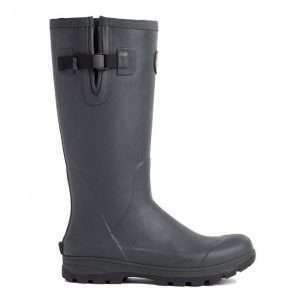
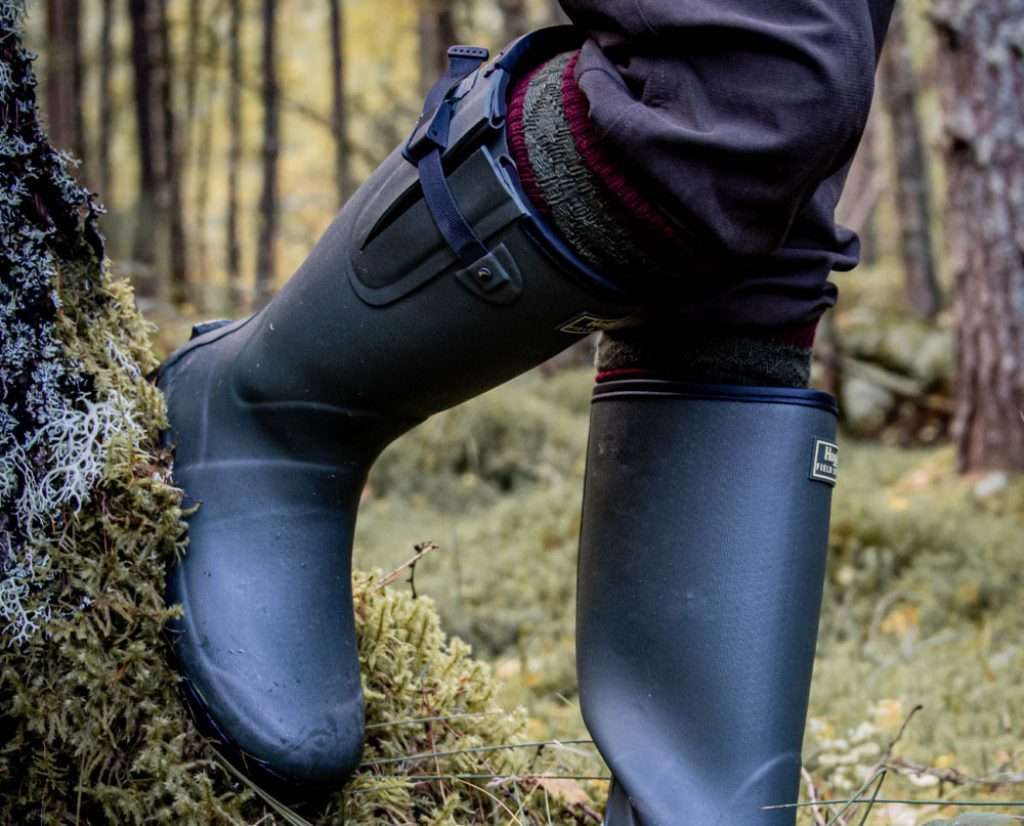
 The design also promotes increased flexibility, high energy impact absorption, and comfortable wear as it allows the boot to mold into the shape of your feet. The removable cushioned EVA insole, on the other hand, has memory foam that delivers superior shock absorption. At the bottom, the rubber boots are constructed with a patented XSTrek high-performance Vibram outsole design.
The design also promotes increased flexibility, high energy impact absorption, and comfortable wear as it allows the boot to mold into the shape of your feet. The removable cushioned EVA insole, on the other hand, has memory foam that delivers superior shock absorption. At the bottom, the rubber boots are constructed with a patented XSTrek high-performance Vibram outsole design.
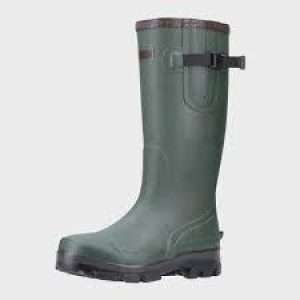 Around the calf area, the wellington boots feature an adjustable buckle fastening for a comfortable fit. The buckle design also helps to close the gap where water and mud like to collect. At the bottom, the waterproof men's boots integrate a deeply treaded outsole design.
Around the calf area, the wellington boots feature an adjustable buckle fastening for a comfortable fit. The buckle design also helps to close the gap where water and mud like to collect. At the bottom, the waterproof men's boots integrate a deeply treaded outsole design.
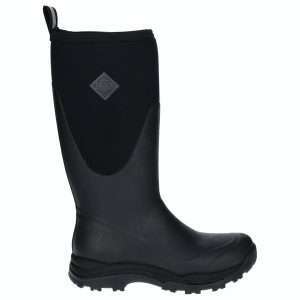 The outsole also features a multidirectional and rugged lug design which delivers a sure-footed grip. In the interior, the winter willies feature a plush midsole for a perfect mix of cushioning and support.
The outsole also features a multidirectional and rugged lug design which delivers a sure-footed grip. In the interior, the winter willies feature a plush midsole for a perfect mix of cushioning and support. 
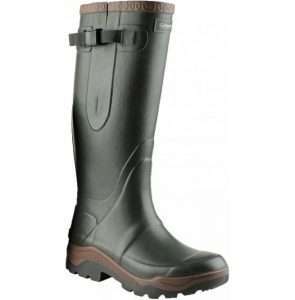

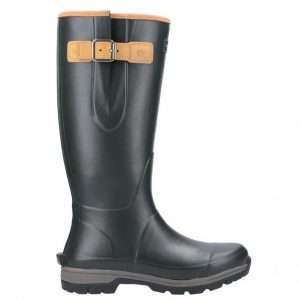
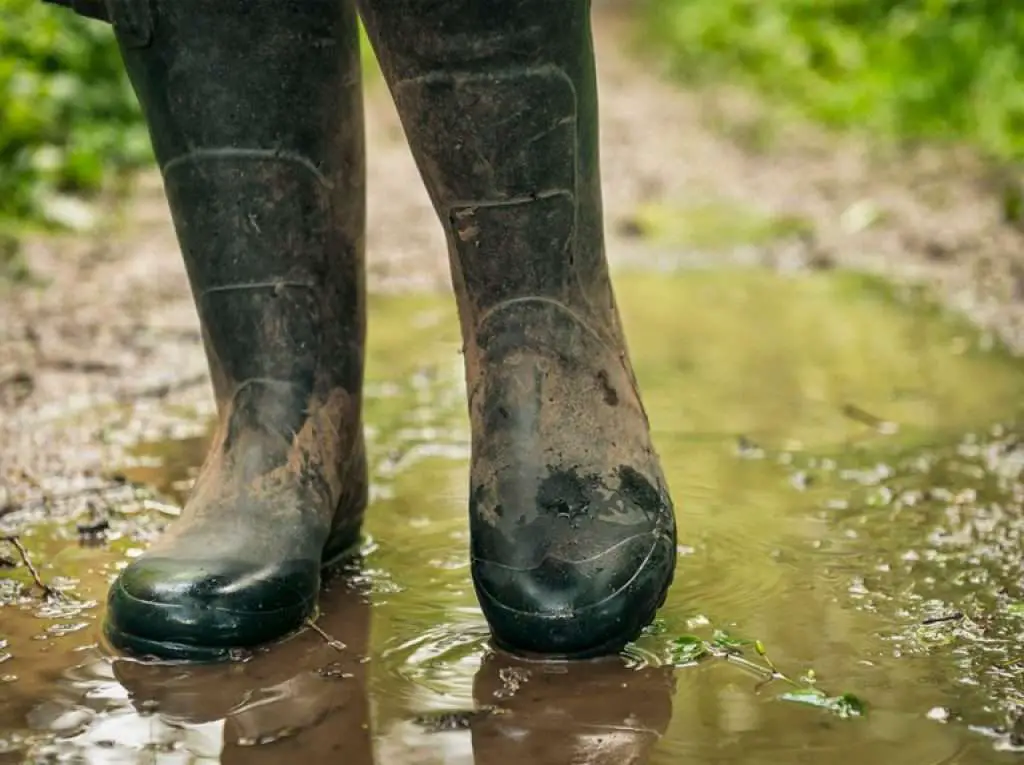

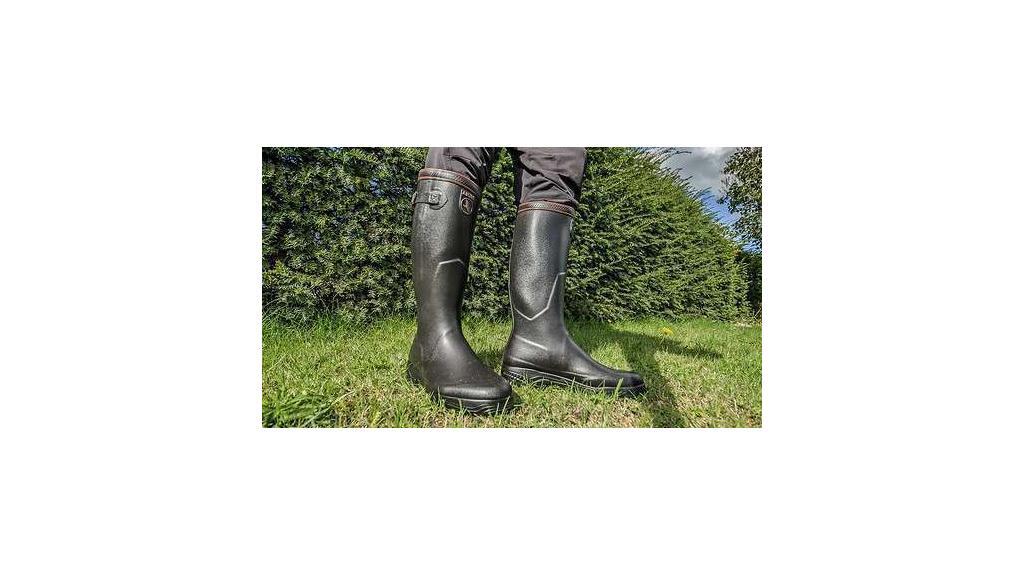

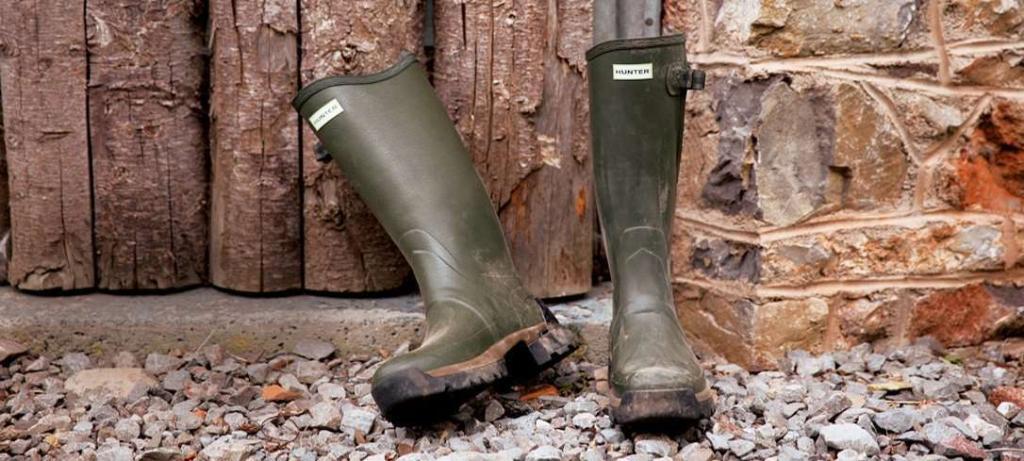
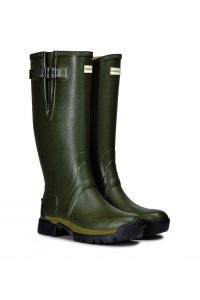
0 Response to "Wellington Boot That is Easy to Slip on"
Post a Comment